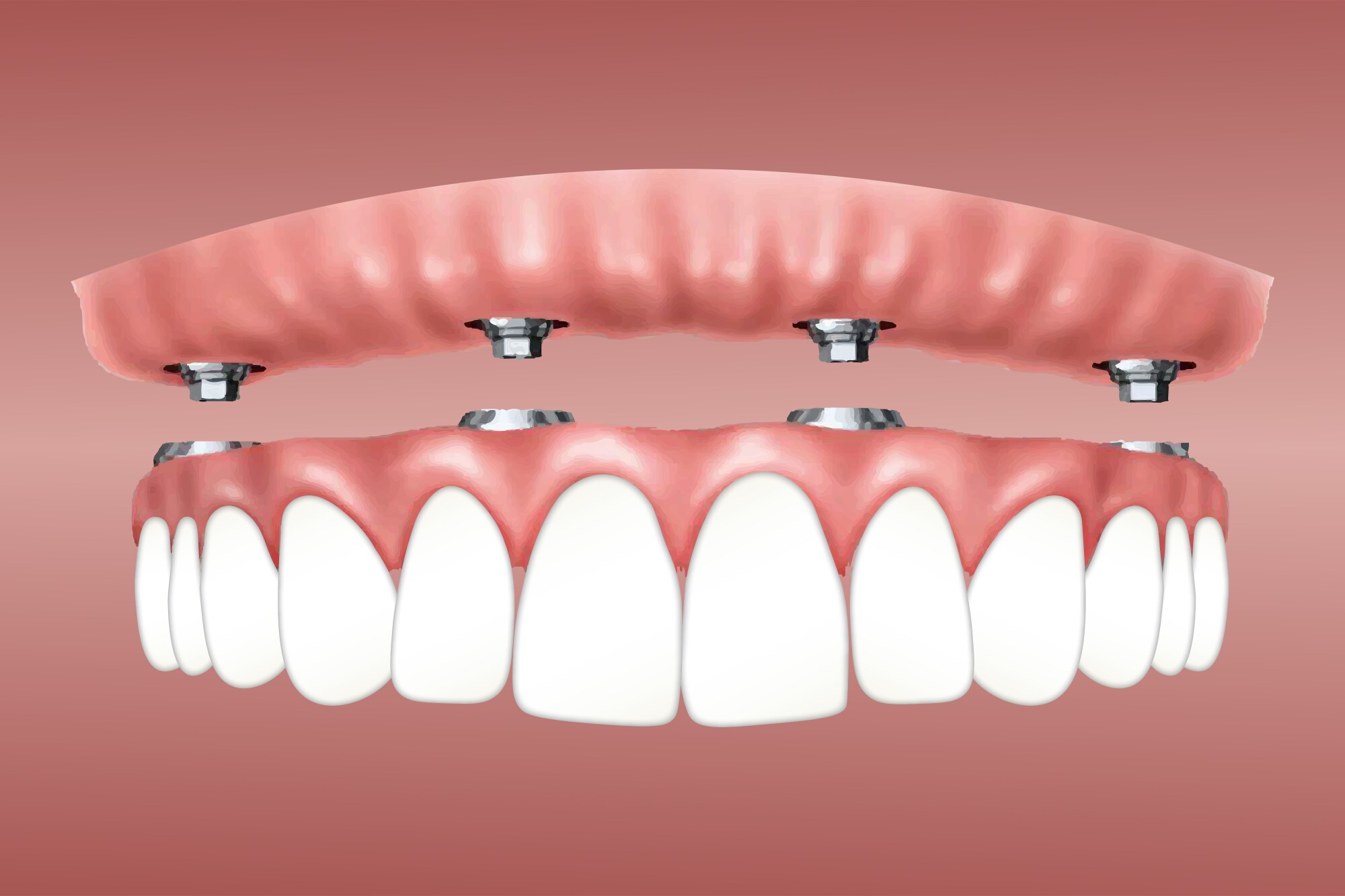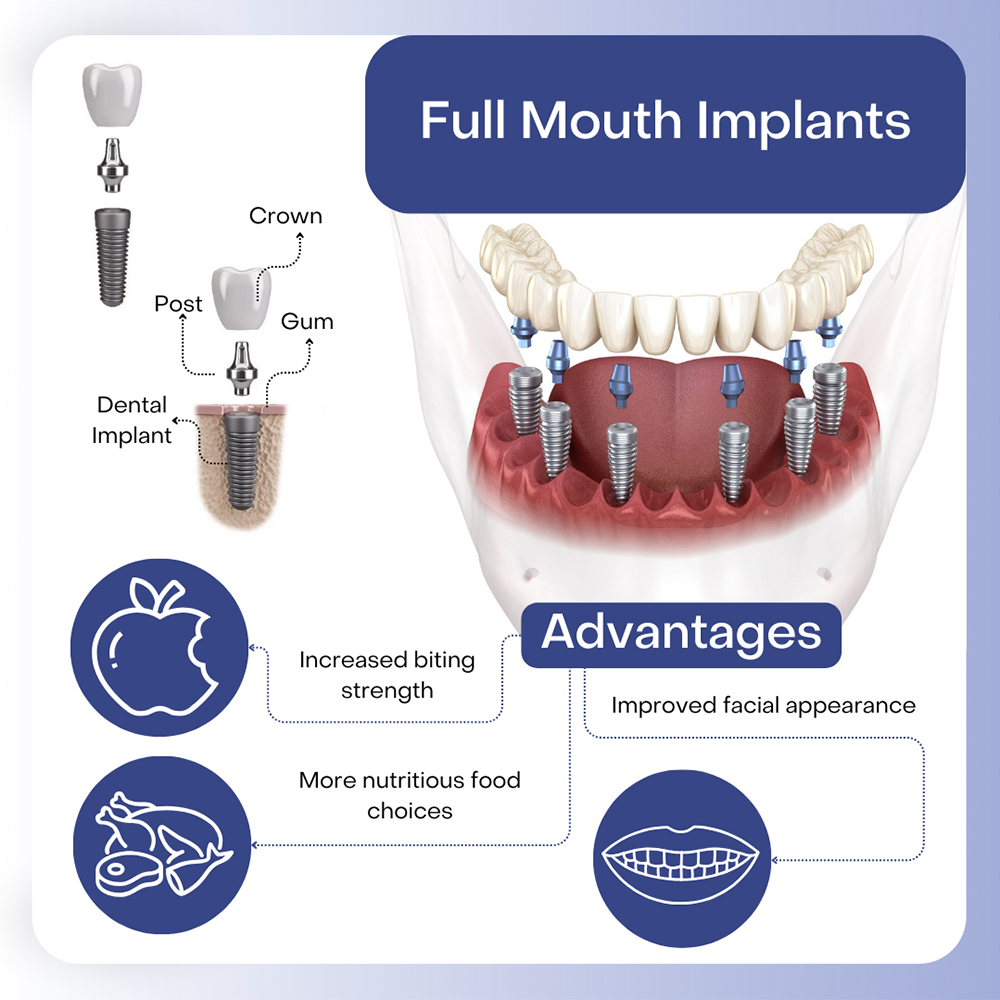The Basic Principles Of Dental Sense
The Basic Principles Of Dental Sense
Blog Article
What Does Dental Sense Do?
Table of ContentsTop Guidelines Of Dental SenseThe Buzz on Dental SenseThe Basic Principles Of Dental Sense Dental Sense - The Facts
are medical devices operatively implanted into the jaw to bring back a person's capacity to chew or their appearance. They provide support for artificial (phony) teeth, such as crowns, bridges, or dentures. When a tooth is lost due to injury or condition, an individual can experience difficulties such as rapid bone loss, defective speech, or changes to eating patterns that result in pain.Oral implant systems contain an oral implant body and oral implant joint and may additionally include an abutment addiction screw. Professional teeth whitening. The dental implant body is operatively inserted in the jawbone instead of the tooth's root. The oral implant joint is typically connected to the implant body by the abutment fixation screw and extends through periodontals right into the mouth to sustain the attached artificial teeth
(https://www.find-us-here.com/businesses/Dental-Sense-Miami-Florida-USA/34200016/)Framework of The Dental Implant System selecting oral implants, speak with your oral company about the possible benefits and risks, and whether you are a candidate for the treatment. Points to consider: Your overall health and wellness is an important consider figuring out whether you are an excellent candidate for oral implants, the length of time it will take to heal, and for how long the dental implant may remain in area.
Smoking may affect the recovery procedure and lower the lasting success of the dental implant. The recovery procedure for the implant body might take several months or longer, throughout which time you generally have a temporary joint in location of the tooth. the dental implant procedure: Very carefully adhere to the dental health guidelines offered to you by your oral service provider.
How Dental Sense can Save You Time, Stress, and Money.
Implant failure can lead to the demand for one more operation to deal with or replace the implant system. Brings back the ability to chew Brings back aesthetic appearance Helps keep the jawbone from shrinking due to bone loss Protects the wellness of the bordering bone and gum tissues Assists keep adjacent (close-by) teeth secure Improves lifestyle Damages to bordering natural teeth during implant positioning Injury to the surrounding cells throughout surgical treatment, such as sinus opening Injury during surgical procedure (for instance, crack of surrounding jawbone) Poor function, such as feeling like the teeth do not bite with each other typically A sensation that the tooth is loosened or twisting in position arising from a joint screw loosening up Implant body failure (looseness of the implant body) because of systemic infection, which may be more probable in patients with uncontrolled diabetes mellitus due to neighborhood infection in bone and gum tissues sustaining the dental implant body as a result of delayed recovery, which might be a lot more likely in people who smoke Trouble cleaning the gum tissues around the implant, leading to poor dental health Unattended periodontal illness Post-surgical feeling numb due to nerve impingement or damage Constantly notify healthcare service providers and imaging specialists that you have oral implants prior to any type of magnetic vibration imaging (MRI) or x-ray treatments.
FDA is not familiar with any adverse occasions reported for MRI or x-ray treatments with oral implants. Oral implants systems are usually constructed from materials that comply with global consensus criteria of the International Company for Standardization (ISO) or ASTM International. These standards have details of what makes a safe product.

A dental implant is a structure that changes a missing out on tooth. With screw-like gadgets, the doctor inserts a dental implant right into the jawbone, and it works as a support for a synthetic tooth, called a crown. A device called an abutment attaches the synthetic tooth to the dental implant. The crown is customized to fit the person's mouth and match the color of their view publisher site teeth.
The 4-Minute Rule for Dental Sense
Some individuals are not qualified for dental implant surgery. It is for dental doctors to operate individuals with: severe illnessuncontrollable metabolic diseasebone or soft cells disease or infectionIf these problems are dealt with, a person can have the surgical procedure. In, dental specialists avoid from operating on people with: If people with any one of the above undergo dental implant surgery, there is a higher danger of the implant falling short.

Dental dental implant surgical treatment is a customized procedure. It's not the very same for every person. However the complying with gives a general overview of what you can anticipate your dental expert, dental doctor, periodontist or prosthodontist to do: Position the implant operatively. Offer you time to recover. Connect the blog post and final crown, bridge or denture.
Next, your cosmetic surgeon will very carefully position the oral implant right into your jaw. Your cosmetic surgeon will certainly rearrange your gum tissues and close the incision with stitches. If your dental implant is near the front of your mouth, your dental professional will certainly make a short-term tooth for you to use up until you heal. In this way, you will not have a gap in your smile while you recoup.
The Buzz on Dental Sense
Throughout the recovery stage, your jawbone needs to fuse to the oral implant. This process can take anywhere from three to 9 months.
Once your implant heals, your dental professional can connect the abutment (tiny connector blog post) and your last repair (crown, bridge or denture). This generally takes about one hour to finish and may call for a second small surgical procedure. You should not really feel any pain during your oral implant procedure due to the fact that your service provider will use medicine to numb your gum tissues.
Report this page